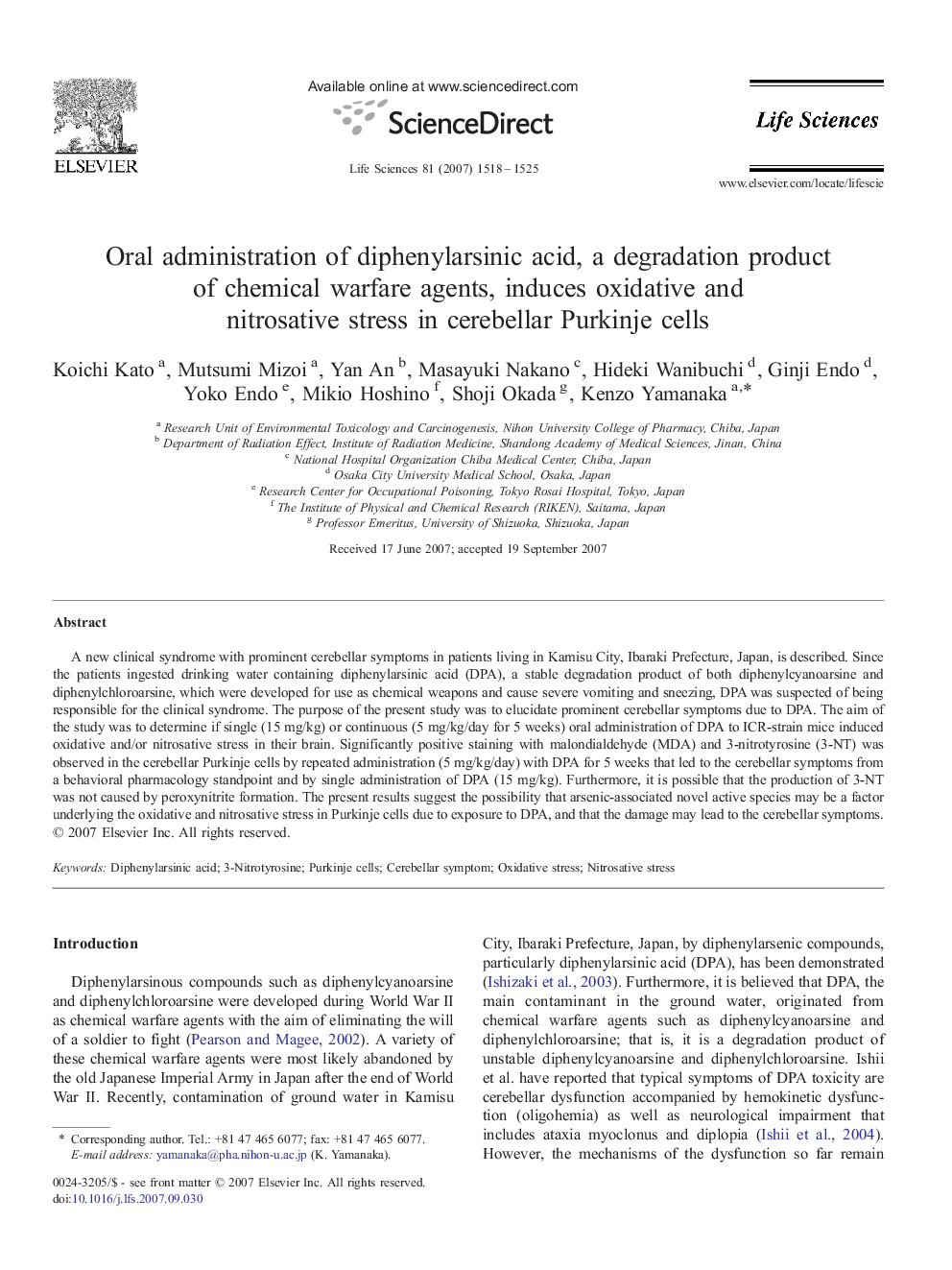| Article ID | Journal | Published Year | Pages | File Type |
|---|---|---|---|---|
| 2553907 | Life Sciences | 2007 | 8 Pages |
A new clinical syndrome with prominent cerebellar symptoms in patients living in Kamisu City, Ibaraki Prefecture, Japan, is described. Since the patients ingested drinking water containing diphenylarsinic acid (DPA), a stable degradation product of both diphenylcyanoarsine and diphenylchloroarsine, which were developed for use as chemical weapons and cause severe vomiting and sneezing, DPA was suspected of being responsible for the clinical syndrome. The purpose of the present study was to elucidate prominent cerebellar symptoms due to DPA. The aim of the study was to determine if single (15 mg/kg) or continuous (5 mg/kg/day for 5 weeks) oral administration of DPA to ICR-strain mice induced oxidative and/or nitrosative stress in their brain. Significantly positive staining with malondialdehyde (MDA) and 3-nitrotyrosine (3-NT) was observed in the cerebellar Purkinje cells by repeated administration (5 mg/kg/day) with DPA for 5 weeks that led to the cerebellar symptoms from a behavioral pharmacology standpoint and by single administration of DPA (15 mg/kg). Furthermore, it is possible that the production of 3-NT was not caused by peroxynitrite formation. The present results suggest the possibility that arsenic-associated novel active species may be a factor underlying the oxidative and nitrosative stress in Purkinje cells due to exposure to DPA, and that the damage may lead to the cerebellar symptoms.
